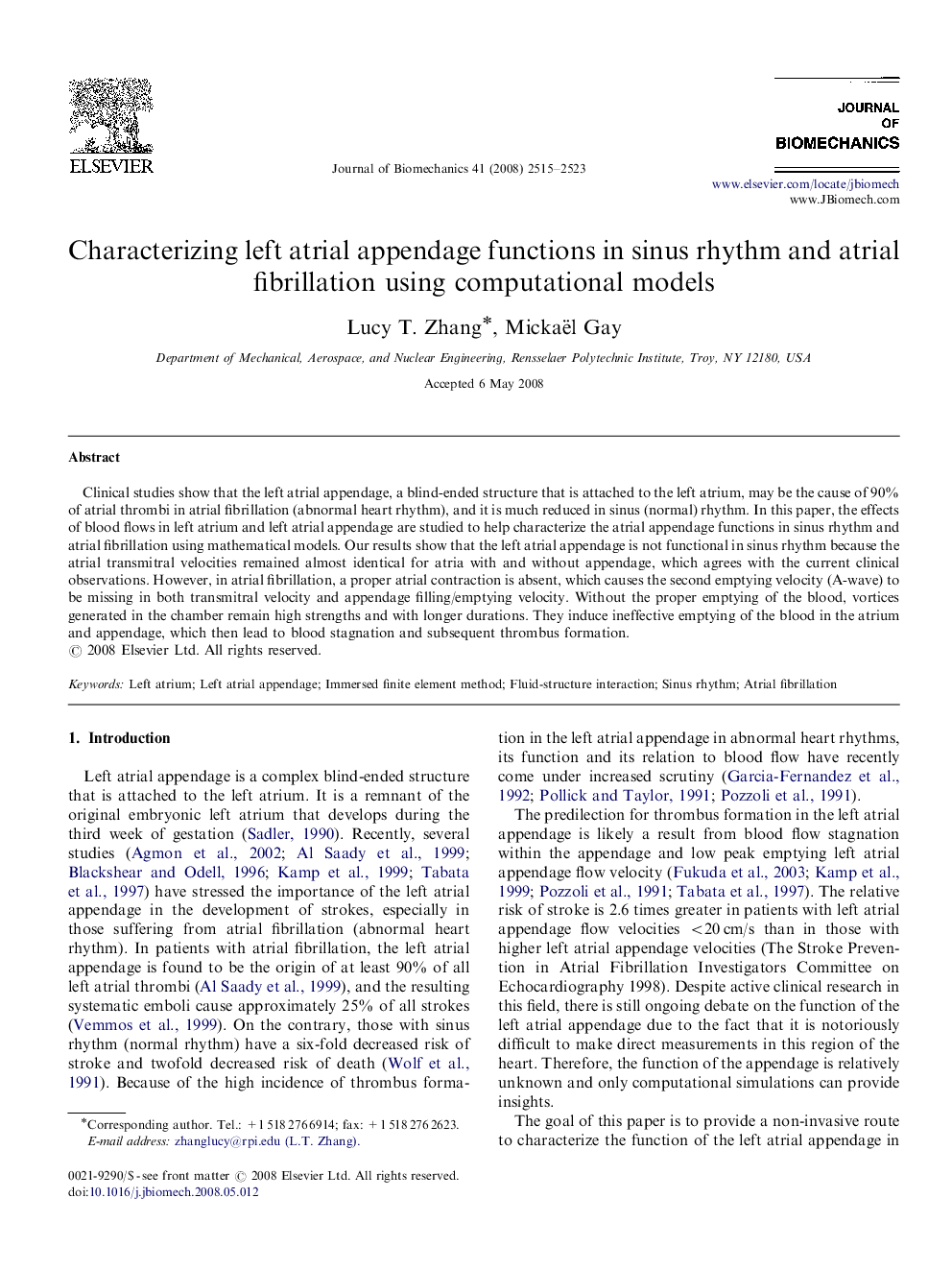| Article ID | Journal | Published Year | Pages | File Type |
|---|---|---|---|---|
| 874966 | Journal of Biomechanics | 2008 | 9 Pages |
Clinical studies show that the left atrial appendage, a blind-ended structure that is attached to the left atrium, may be the cause of 90% of atrial thrombi in atrial fibrillation (abnormal heart rhythm), and it is much reduced in sinus (normal) rhythm. In this paper, the effects of blood flows in left atrium and left atrial appendage are studied to help characterize the atrial appendage functions in sinus rhythm and atrial fibrillation using mathematical models. Our results show that the left atrial appendage is not functional in sinus rhythm because the atrial transmitral velocities remained almost identical for atria with and without appendage, which agrees with the current clinical observations. However, in atrial fibrillation, a proper atrial contraction is absent, which causes the second emptying velocity (A-wave) to be missing in both transmitral velocity and appendage filling/emptying velocity. Without the proper emptying of the blood, vortices generated in the chamber remain high strengths and with longer durations. They induce ineffective emptying of the blood in the atrium and appendage, which then lead to blood stagnation and subsequent thrombus formation.
